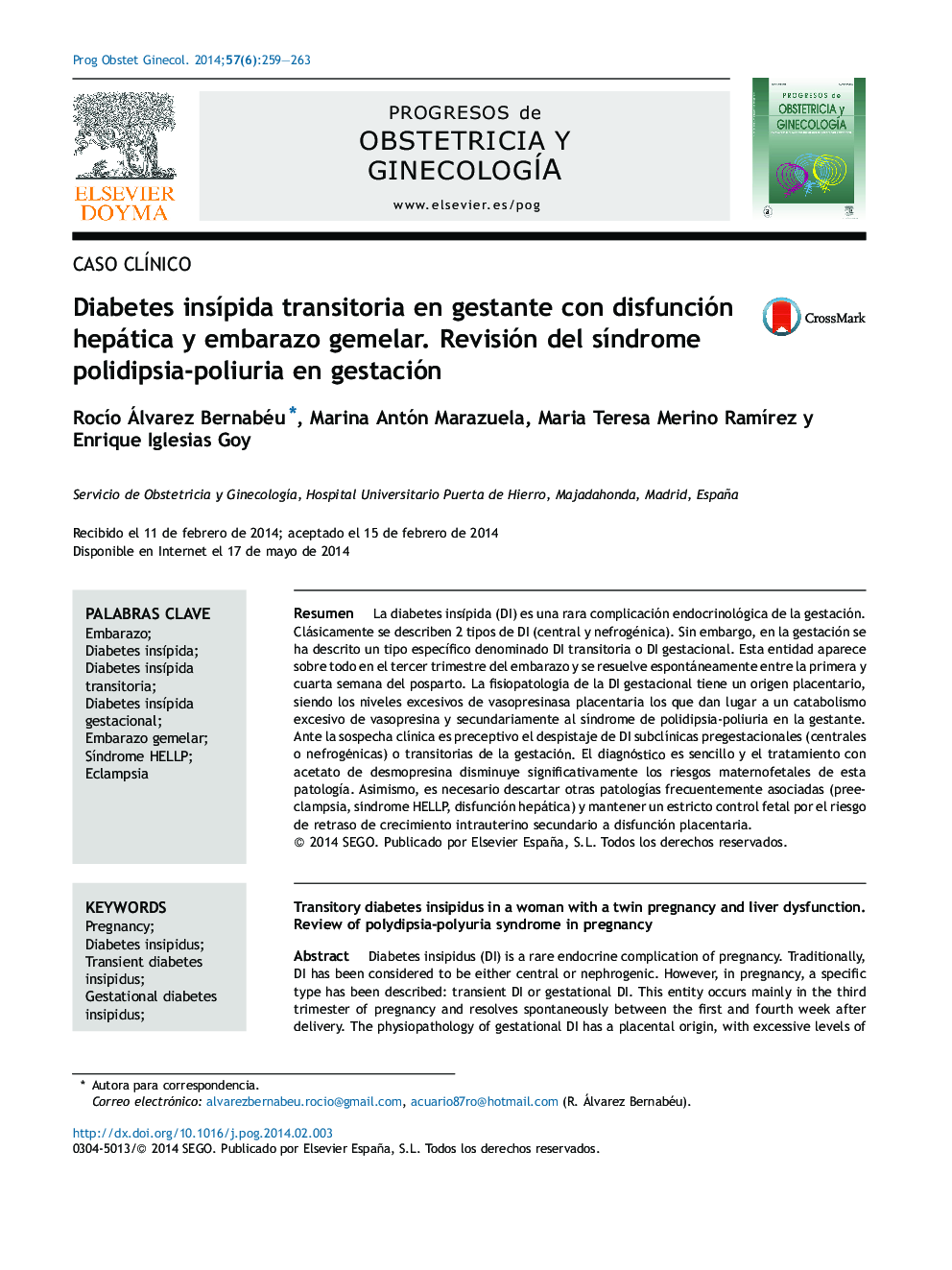| Article ID | Journal | Published Year | Pages | File Type |
|---|---|---|---|---|
| 3968587 | Progresos de Obstetricia y Ginecología | 2014 | 5 Pages |
Abstract
Diabetes insipidus (DI) is a rare endocrine complication of pregnancy. Traditionally, DI has been considered to be either central or nephrogenic. However, in pregnancy, a specific type has been described: transient DI or gestational DI. This entity occurs mainly in the third trimester of pregnancy and resolves spontaneously between the first and fourth week after delivery. The physiopathology of gestational DI has a placental origin, with excessive levels of placental vasopressinase leading to excessive catabolism of vasopressin and secondarily to polydipsia-polyuria syndrome in the pregnant woman. Screening for subclinical pregestational DI (central or nephrogenic) or transient gestation is mandatory whenever this entity is suspected clinically. Diagnosis is simple and treatment with desmopressin acetate significantly decreases the maternal and fetal risks of this disease. It is also necessary to exclude other frequently associated disorders (preeclampsia, HELLP syndrome, liver dysfunction) and to carry out close fetal monitoring, because of the risk of intrauterine growth retardation secondary to placental dysfunction.
Keywords
Related Topics
Health Sciences
Medicine and Dentistry
Obstetrics, Gynecology and Women's Health
Authors
RocÃo Álvarez Bernabéu, Marina Antón Marazuela, Maria Teresa Merino RamÃrez, Enrique Iglesias Goy,
